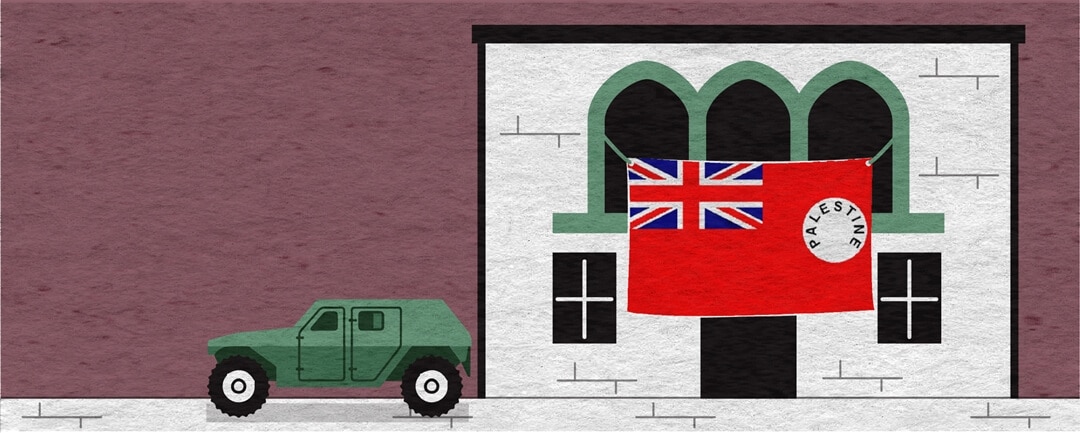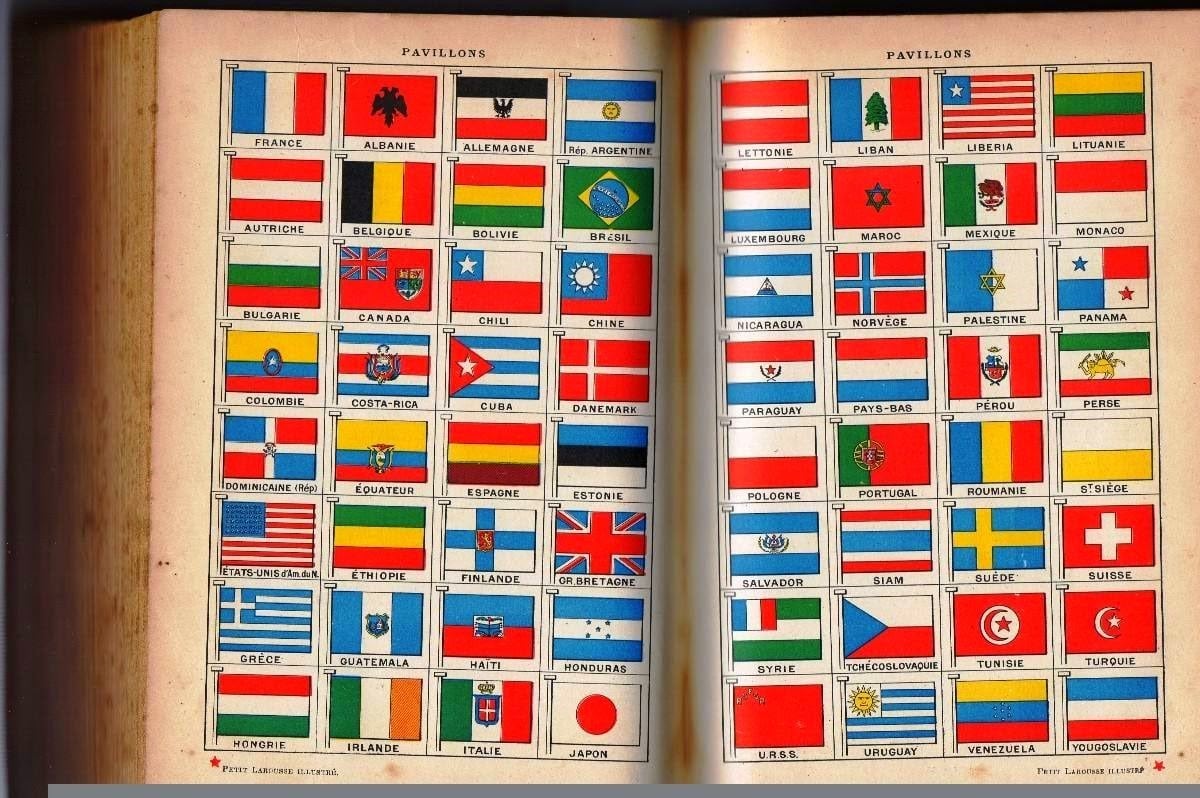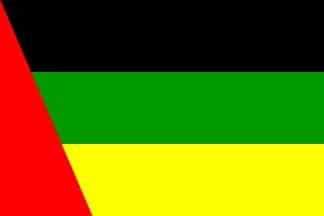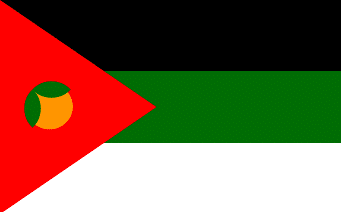

One of the more recent myths that have gained traction among defenders of Israel is the claim that the actual mandate of Palestine flag had a star of David on it. This is usually accompanied by an image of an old book displaying this flag. In their mind, this proves without a doubt that Palestine was always Zionist even during the mandate period. This also neatly complements other popular myths, such as “Arabs moved to Palestine because of Zionist innovation” [You can read more about this here] or “Palestinian referred only to Jewish citizens of the mandate” [You can read more about this here].
The fact that this claim and image went viral in some pro-Israel circles is a testament to how history and facts have become subservient to reinforcing certain ideologically driven narratives. Without exaggeration, this talking point could be dispelled with a 5 second internet search. But as with all propaganda, conveying historical or factual accuracy is not the intended goal of these claims. These claims serve mainly to flip reality on its head, and indigenize the colonists while portraying Palestinians as outsiders and usurpers to the land.
But what is the story of this flag, and where did it come from, and why is it being employed so frequently in Zionist talking points?

The origins of this claim comes from this image, which was taken from a French dictionary titled Le Petit Larousse Illustré:

This image is from the 1939 version.
This flag appeared in the dictionary from the early 1920s until the late 1930s. However, even a cursory glimpse at the provided image shows that there are other erroneously labeled flags. For example, the flag of Morocco is incorrect, so is the Soviet Union flag. Browsing through the other pages and editions of the dictionary reveals that there are other errors in their flag section, such as quite a bizarre flag for the short-lived kingdom of Hejaz which is a pure fabrication.

Unsurprisingly, images from the dictionary started to turn up cropped in a way as to exclude the other flags on the page in an attempt to lend it more legitimacy.
The only evidence of the use of this flag was from an image in National Geographic in the 1930s of a steam ship named “Emanuel” which was operated by the Hofiya shipping company. It should be noted that this was not considered the official flag even among Zionist groups or the Yishuv, as other shipping companies did not fly this flag. It is still unknown what drove the dictionary to select this specific flag to represent the official mandate of Palestine flag at the time, but seeing the other errors in their flag section it seems that mistakes of this kind were par for the course.
Needless to say, no, this was not the official flag of the mandate of Palestine. It was never used officially or recognized. It was most likely used by one Zionist group or the other in Palestine, but never in an official capacity.

It is worth mentioning that there also existed various Palestinian flags from that same period. There was actually a contest to design an Arab Palestinian flag. Similarly, they were never considered official or recognized by the mandate authorities, and nobody claimed they were. In typical Zionist propaganda fashion, this is never mentioned. The cherry-picking of information and omission of inconvenient data is the standard modus operandi for these talking points.

Proposed design for the Palestinian flag, 1929
The popularity of this talking point stems from Zionist settler’s yearning to prove their exclusive ownership of the land. This becomes harder to argue when the majority of them arrived barely a couple of decades before the founding of Israel in 1948, and even then, they were not numerous enough to form a solid majority even in their assigned land partition. This insecurity translates into another attempt to rewrite history in a way which is more friendly to their national mythology, regardless of its veracity.
What stands out about this attempt, however, is how ridiculous it is on every level. Not only could it be debunked in a matter of seconds, but it’s quite a futile claim to begin with. Let’s say for the sake of argument that this was indeed the flag of the mandate of Palestine, what would this prove? I would like to remind you that the flag of mandatory Palestine was a colonial flag, it was not a flag that any of the indigenous population regarded warmly. Would this not simply reinforce the position that Zionist settlers were colonists, or at the very least propped up by colonial powers?
I somehow doubt the people spreading this talking point thought that far ahead.

- Khalidi, Rashid. The Hundred Years’ War on Palestine: A History of Settler Colonialism and Resistance, 1917–2017. Metropolitan Books, 2020.
- Khalidi, Rashid. Palestinian identity: The construction of modern national consciousness. Columbia University Press, 2010.
- Khalidi, Rashid, ed. The origins of Arab nationalism. Columbia University Press, 1991.
- Muslih, Muhammad. “Arab politics and the rise of Palestinian nationalism.” Journal of Palestine Studies 16.4, 1987: 77-94.
- Anderson, Benedict. Imagined communities: Reflections on the origin and spread of nationalism. Verso books, 2006.
- Hobsbawm, Eric, and Terence Ranger, eds. The invention of tradition. Cambridge University Press, 2012.
- Weber, Eugen. Peasants into Frenchmen: the modernization of rural France, 1870-1914. Stanford University Press, 1976.

